
- 176 pages
- English
- ePUB (mobile friendly)
- Available on iOS & Android
eBook - ePub
Lacan For Beginners
About this book
Jacques Lacan is probably the most influential psychoanalyst since Freud (of the roughly 20,000 psychoanalysts in the world, about half are ‘Lacanians’) yet most people know nothing about him. The 10,000 analysts who use Lacan’s ideas work mostly in France, Spain, Italy, and South America. To the rest of the world, including England and America, Lacan is a genius-in-waiting, due to be ‘discovered’ any day now.
Despite or because of his brilliance, Lacan is difficult to understand. He wrote with an obscure, style that casually refers to philosophy, linguistics, biology, mathematics, etc.—and to make matters worse, his ideas changed over the years.
Lacan For Beginners by Philip Hill introduces the reader to Lacan’s theories and their relation to clinical practice in twelve elegantly structured chapters, designed around tantalizing questions that clarify Lacan’s ideas.
Lacan For Beginners is written with insight and wit and illustrated with examples from popular culture and cinema. The artwork is humorous and informative, and works with the text. So don’t you think it is about time you become familiar with his work?
Despite or because of his brilliance, Lacan is difficult to understand. He wrote with an obscure, style that casually refers to philosophy, linguistics, biology, mathematics, etc.—and to make matters worse, his ideas changed over the years.
Lacan For Beginners by Philip Hill introduces the reader to Lacan’s theories and their relation to clinical practice in twelve elegantly structured chapters, designed around tantalizing questions that clarify Lacan’s ideas.
Lacan For Beginners is written with insight and wit and illustrated with examples from popular culture and cinema. The artwork is humorous and informative, and works with the text. So don’t you think it is about time you become familiar with his work?
Frequently asked questions
Yes, you can cancel anytime from the Subscription tab in your account settings on the Perlego website. Your subscription will stay active until the end of your current billing period. Learn how to cancel your subscription.
No, books cannot be downloaded as external files, such as PDFs, for use outside of Perlego. However, you can download books within the Perlego app for offline reading on mobile or tablet. Learn more here.
Perlego offers two plans: Essential and Complete
- Essential is ideal for learners and professionals who enjoy exploring a wide range of subjects. Access the Essential Library with 800,000+ trusted titles and best-sellers across business, personal growth, and the humanities. Includes unlimited reading time and Standard Read Aloud voice.
- Complete: Perfect for advanced learners and researchers needing full, unrestricted access. Unlock 1.4M+ books across hundreds of subjects, including academic and specialized titles. The Complete Plan also includes advanced features like Premium Read Aloud and Research Assistant.
We are an online textbook subscription service, where you can get access to an entire online library for less than the price of a single book per month. With over 1 million books across 1000+ topics, we’ve got you covered! Learn more here.
Look out for the read-aloud symbol on your next book to see if you can listen to it. The read-aloud tool reads text aloud for you, highlighting the text as it is being read. You can pause it, speed it up and slow it down. Learn more here.
Yes! You can use the Perlego app on both iOS or Android devices to read anytime, anywhere — even offline. Perfect for commutes or when you’re on the go.
Please note we cannot support devices running on iOS 13 and Android 7 or earlier. Learn more about using the app.
Please note we cannot support devices running on iOS 13 and Android 7 or earlier. Learn more about using the app.
Yes, you can access Lacan For Beginners by Philip Hill,David Leach in PDF and/or ePUB format, as well as other popular books in Philosophy & Philosophy History & Theory. We have over one million books available in our catalogue for you to explore.
Information
CHAPTER 1
WHO WAS LACAN?
He became a skinny but handsome intellectual and a dandy. He was exempted from military service because of his physique.
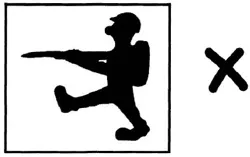
Lacan underwent medical and psychiatric training, a personal psychoanalysis and became a man of charisma,
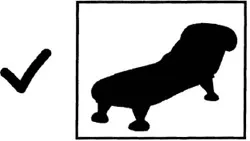
Jacques Lacan was born to a middle class French Catholic family in 1901, seven years after Freud’s work was first published. Lacan would usually have his nose in a book while other boys were playing football.
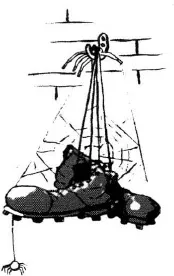
the lover of many women,
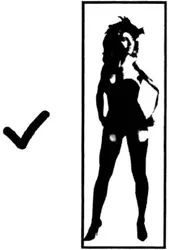
and an atheist.


Lacan’s difficult lectures were attended by many leading psychoanalysts and intellectuals. There would often be lengthy silences, in between Lacan writing obscure symbols and formulae on a blackboard. Listeners were often baffled by his complicated word plays and enigmatic puns, and by his use of German, Hebrew, Chinese and Ancient Greek. Even French speakers attending his talks were not sure if he was speaking French or not. Now there is a cult following of Lacan, with some thirty different camps of bickering followers, each claiming loyalty to the master.
Most of Lacan’s work was not published or otherwise written down; he simply spoke it at his weekly seminars and lectures.
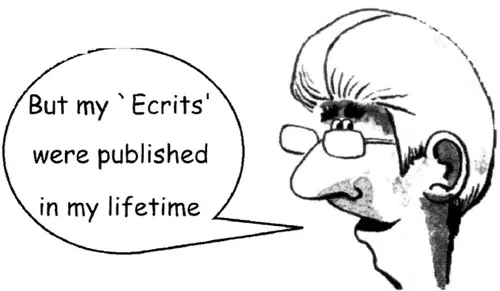
Some of Lacan’s tape-recorded talks have been published and translated, but much of his work remains unpublished or untranslated; it circulates only in ‘samizdat’ form, as unofficial transcripts of the seminars. Lacan scorned publication, pronouncing it as ‘poubellication’, from the French ‘poubelle’, for garbage can.
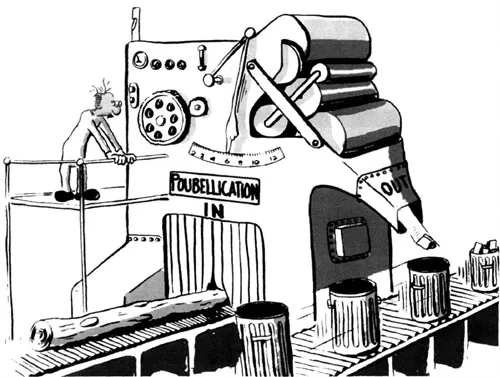
The clinical and theoretical innovations introduced by Lacan (such as his infamous clinical sessions of variable length that could last any time between five minutes and an hour, instead of the conventional fifty minutes) produced splits in the psychoanalytic movement, and finally led to his being expelled from the International Psychoanalytic Association in 1953, and to the formation of his own psychoanalytic school.
Lacan was never comfortable with the relationship between institutions, including psychoanalytic training schools, and psychoanalysis as a clinical practice. The problem arises because the psychoanalyst helps his patients question their own values and issues, without the analyst having an investment in a particular answer. The psychoanalyst should not bring his own prejudices to bear on his patients’ questions. Lacan thought that this special sort of space, in which the patient can speak openly, is essential in psychoanalysis, but very difficult to encourage and promote through an institution because of the kinds of identification and ideals of authority that tend to operate within institutions. Arguing that the institutionalization of psychoanalysis was fraught with dangers for clinical practice, he even took the extraordinary step of dissolving his own psychoanalytic school in 1980, the year before his death.
Lacan’s work is difficult to study; not only because he lectured and wrote with a very complicated style, but also because he introduced many new ideas and concepts that are dependent on one another. Studying his work is made more difficult because many of these ideas changed during the course of his lifetime.
Lacan was also an intellectual magpie—he took and adapted for his own ends many ideas from other fields, including linguistics, mathematics, literature, philosophy and science.
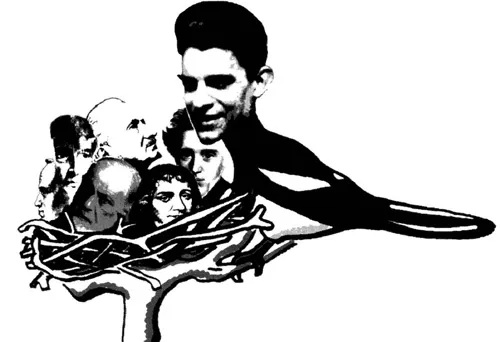
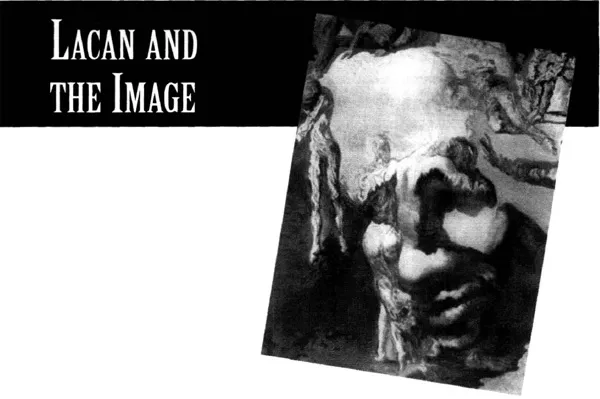
One of the main influences on the early Lacan, in the 1920s and 1930s were the Surrealists, then in their heyday. Many Surrealists were interested in psychoanalysis, including Salvador Dali, who met both Freud and Lacan.

Lacan had noticed that the meanings patients attach to words are often fluid and seem to be attached to images, while meaning in Surrealist art is also attached to images.
How might images play a role in the clinic? Here is an example of someone whose life had been dominated by an image: a woman had a phobia of open and public spaces, so she stayed at home. She had a fear of being seen lying down in the street. In the course of her psychoanalysis it transpired that she was ashamed of her past sexual conduct, and of her sexual desires, and that above all, she did not want to be seen by others as a ‘fallen woman’. The image or idea of the fallen woman dominated her life, via the idiom ‘fallen woman’. It was around these words that her phobic symptom operated, not only by ‘speaking the truth’ about her past ‘shame’, but protecting her from further sexual encounters that she desired.
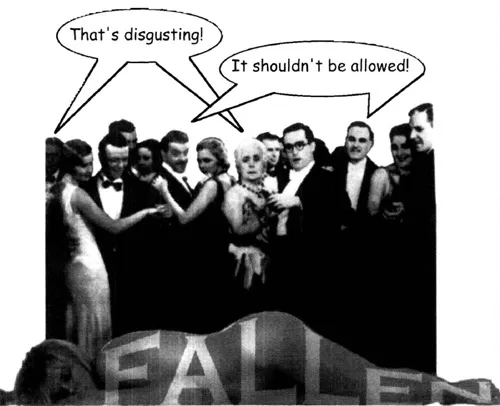
Here ‘fallen woman’ is ambiguous, with two meanings, just as Dali’s picture on page nine is ambiguous, between a face and women.
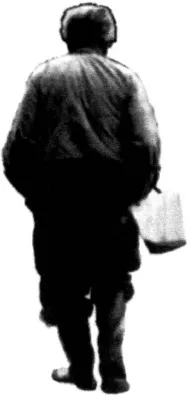
In this first phase of his work Lacan stressed the role of images and the imaginary in the workings of the human mind. He had been particularly struck by Lorenz’s famous experiment with ducks. Lorenz had put his Wellington boots next to duck eggs. As the ducklings hatched out and saw the boot, they became ‘imprinted’ with its image; wherever that boot went, the little ducks would follow. They mistook Lorenz’s boot for their mummy. When Lorenz wore his Wellingtons he was slavishly followed by a trail of ducklings, each of whom were captivated by the image of the boot.
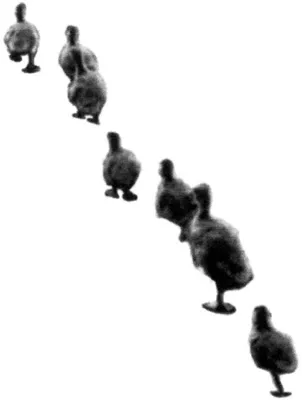
In the same way, a man might love a woman who looked, smelt or sounded like his mother, because he is captivated by an image of her. It is not unusual for people to fall in love with someone who has something familiar about them, a smell, a laugh or their eyes. In love, we typically confuse our new love with an old love. Lacan once said of his dog:

This idea of ‘domination by the image’ is for Lacan tied to the concept of captivation, slavery or bondage. Such a bond can exist between a child and mother, between lovers or between a slave and a master.
Lacan took this idea from the German philosopher Hegel, who developed a theory of the ‘slave-master relation’. We will look at this in chapter six, on discourse, but to understand the slave-master relation we need to first look at the problems Socrates thought we have in knowing things, and at Freud’s theory of consciousness, or the ‘ego’ which also stresses mis-knowing.
Socrates is an important figure for Lacan because he had a problem with knowing, kn...
Table of contents
- Coverpage
- Titlepage
- Copyright
- Contents
- Introduction
- Chapter 1: Introduction. What is psychoanalysis? What have images got to do with it? What does the ego do?
- Chapter 2: What has language got to do with psychoanalysis? What did Lacan mean when he said that ‘the unconscious is structured like a language’?
- Chapter 3: Lacan’s theory of ‘the real’ as the ‘impossible to soy’ that always returns.
- Chapter 4: ‘Jouissance’ or sexual enjoyment and desire. Is sexual enjoyment something that only happens in intercourse? How are ‘need’, ‘demand’ and ‘desire’ differentiated?
- Chapter 5: Objects and their subject.
- Chapter 6: The Four Discourses: four ways of speaking and being.
- Chapter 7: Overview of psychopathology: focus on perversion, hysteria and obsessional neurosis.
- Chapter 8: What is psychosis?
- Chapter 9: What is feminine sexuality? What does it mean to be a woman?
- Chapter 10: What is topology? and: What does it have to do with time? Why do Lacanians use variable length sessions?
- Chapter 11: What is the good of psychoanalysis? and: What is the meaning of life?
- Chapter 12: Review.
- GLOSSARY
- BIBLIOGRAPHY by chapter with suggestions for further reading
- INDEX